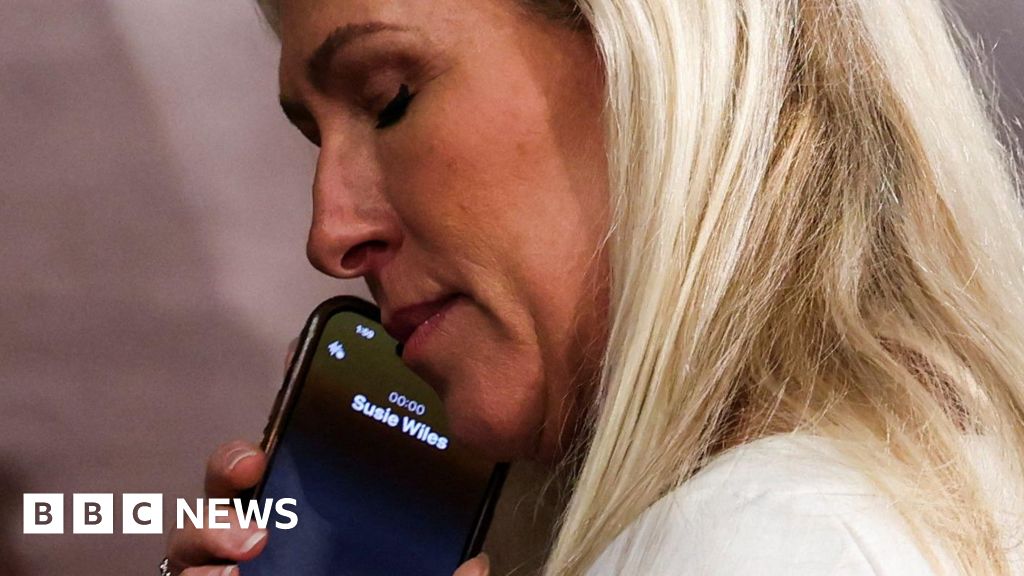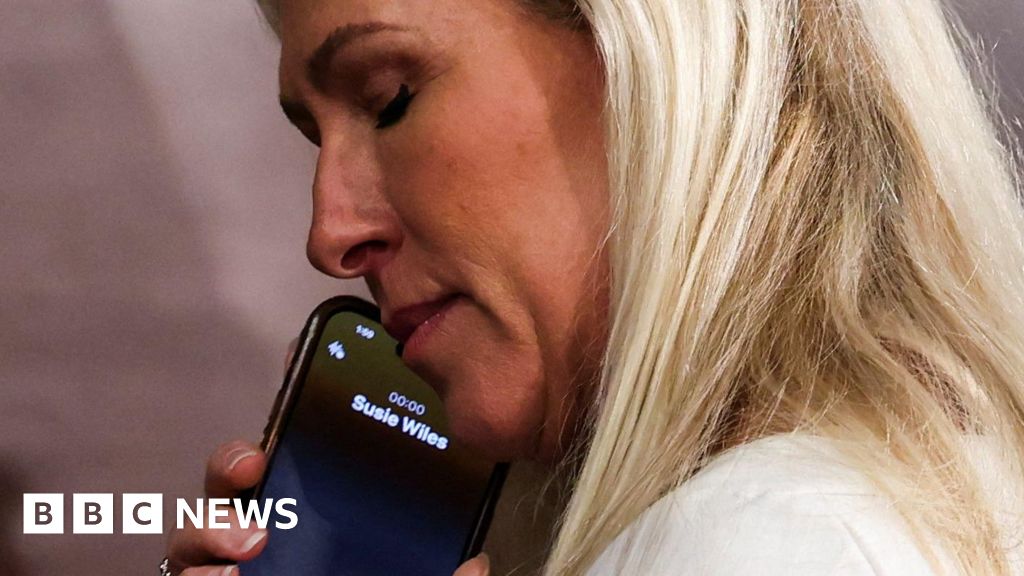
Shortly after Mike Johnson appeared to come up two votes shy of retaining the speakership of the House of Representatives on Friday, Marjorie Taylor Greene – the loyal Trump ally and firebrand Republican congresswoman from Georgia – stood in the middle of the House chamber, intently speaking on her mobile phone.
Although she covered the device with her hand, a sharp photographer for Reuters news agency, Evelyn Hockstein, captured the name of the person on the other end of the conversation – incoming White House chief of staff Susie Wiles.
It was a tangible sign of the enormous interest President-elect Donald Trump was taking in this vote. Trump had enthusiastically endorsed Johnson to be speaker for the incoming session of Congress earlier this week, and defeat in the first round of balloting would have been an embarrassment.
Behind the scenes, however, wheels were furiously turning – setting up a chaotic interlude in the House after Johnson had initially appeared headed to at least a temporary defeat.
At one point, Johnson walked out of the chamber, followed by two of the men who had opposed him, Ralph Norman of North Carolina and Keith Self of Texas. Meanwhile, other members of the House and their families milled about and chatted, waiting to see what happened next.
When Johnson ultimately returned, he was all smiles.
Trump himself had made a direct appeal to Norman and Self to back Johnson via speakerphone conversation, Republican sources told news outlets including Politico.
Because the vote had not been officially declared to be closed, Norman and Self were able to switch their votes to the Louisianian, putting him at just the 218 mark necessary to retain the speaker’s gavel. Kentucky Congressman Thomas Massie was the lone Republican holdout.
Both Norman and Self told reporters after the vote that they had spoken to Trump during the course of the day.
Norman said he conversed with Trump twice on Friday. The first during a several-minute phone call when fellow Republican Nancy Mace handed him her phone and the president-elect was on the other line.
The second time was a longer, 15-minute call that included Norman, Johnson and Self, he said, without confirming the exact timing.
“Trump was exactly right when he told me Mike is the only one who has the likeability factor,” Norman said.
He went on to describe Trump as “enthusiastic” about the Republican trifecta in Washington – control of the House, Senate and presidency.
“I said, ‘Mr President I agree with you, I’m just hoping Mike has got the oomph to pull this off,'” Norman said.
Self also said he spoke with Trump several times on Friday.
“We had a discussion about the entire process,” he said of his conversation with the president-elect.
Ultimately, embarrassment was avoided – even if Trump publicly appeared to be more focused on other things.
In the midst of the voting, as the names of House members were called in alphabetical order, the president-elect was complaining on social media about the possibility that US flags would be at half-staff during his 20 January inauguration – part of the traditional mourning process following the death of former president Jimmy Carter.
Friday afternoon’s proceedings underscored just how tenuous the Republican majority in the House of Representatives will be over the course of the coming months.
Besides the three initial Republican votes against Johnson, another five hard-line conservatives – who have objected to the compromises Johnson has made with Democrats in the past – delayed casting their ballots during the initial roll call. While they ultimately relented, it was a very obvious shot across the speaker’s bow.
After the final vote, the House Freedom Caucus – some of whom were among the temporary holdouts – released a statement explaining that they ultimately backed Johnson because of their support for Trump.
“We did this despite our sincere reservations regarding the speaker’s track record over the past 15 months,” they wrote.
For now, the party holds a 219 to 215 edge over Democrats – but that could shrink by two if Congresswoman Elise Stefanik of New York and Michael Waltz of Florida fill administration jobs Trump has offered them. It will be months until special elections determine their replacements.
That means Trump will have to hold his entire House Republican membership together if he wants to pass key pieces of his legislative agenda early in his presidency, including hardline immigration reforms, new tariffs, and tax and spending cuts.
As Friday demonstrated, this could be a tall task.
Additional reporting from Rachel Looker



